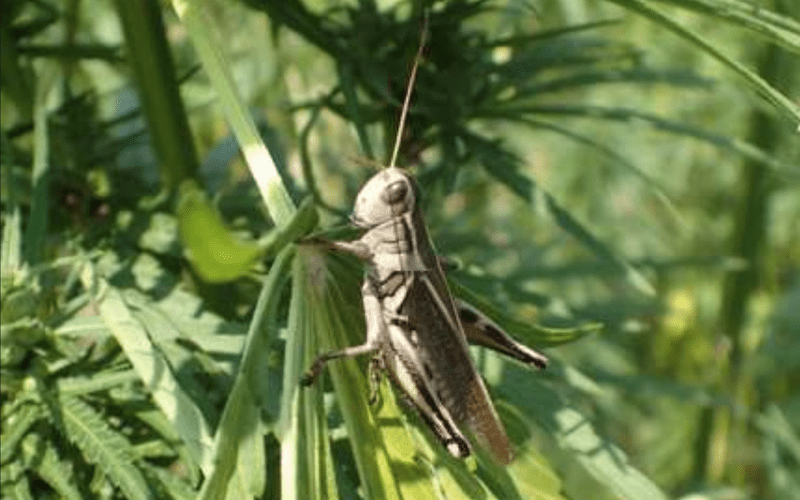
Pest Alert: Grasshopper Populations Unusually High In Montana
Montana State University Extension has issued an alert for growers after a rise in the grasshopper population. Several species of grasshoppers feed on hemp leaves and stems, and occasionally they will feed within developing buds.
Below is grasshopper identification information from Montana State University Extension.
Species in MT: More than 100 different grasshopper species occur in Montana; about 24 can damage rangeland and crops. Clear-winged (Camnula pellucida) (image 1), two-striped (Melanoplus bivittatus) (image 2), and migratory (Melanoplus sangunipes) grasshoppers are often especially abundant. Numbers increase during hot dry periods in rangeland and other grassy areas, from where they can invade and damage many different crops. The USDA lab in Sidney Montana maintains a webpage with extensive grasshopper information: http://www.sidney.ars.usda.gov/grasshopper/.
Appearance: Depending on the species, grasshoppers come in a variety of sizes and colors. Mature adults can range from ¾ to 2 inches in length. The juveniles resemble the adults in shape, but can differ widely from adults of the same species in color. Grasshoppers develop through five juvenile instars (stages) before reaching adulthood (image 3), and only the adults have fully formed wings for flying. On juveniles, the developing wing buds increase in size with each instar, and this feature is often used to time insecticidal sprays.
Host range: Most grasshoppers prefer to eat grasses, and some species are more common on rangeland. However, most will feed opportunistically on a wide range of plants including forbs. Later in the summer when grasses are dry or have been consumed, these grasshoppers will move to, and feed on, almost any available green vegetation. Juvenile grasshoppers can migrate on land and adults can fly long distances.
Damage: Grasshoppers have chewing mouthparts and damage rangeland and crops by consuming the foliage. At high populations they can strip a field bare. As the season progresses and grasshoppers get larger, damage can become more severe. Crop damage is often first observed along the field margin as grasshoppers migrate from surrounding grassy areas. In some cases they may cause yield damage more directly, by clipping off wheat heads or by preferentially feeding on developing pulse crop flowers.
Management: Most methods for managing grasshoppers rely on insecticide applications based on scouting, and thresholds are crop-specific. Biological and cultural control options are generally not highly effective. Scouting for grasshoppers can begin at the end of May and may continue throughout the summer. Early in the season grasshoppers are small, less mobile and more difficult to see. Populations may first aggregate on south facing slopes that are warmer. Later in the season they are very mobile and may appear suddenly in high numbers.
Grasshopper numbers can be estimated using the square foot method: the number of grasshoppers in a one square foot area is estimated visually and randomly repeated 18 times while walking a transect. Grasshoppers are less active earlier in the morning and easier to count. The total number of grasshoppers is tallied and divided by 18 to give the average number per square foot. Alternatively, four 180-degree sweeps with a 15-inch diameter sweep net is considered equivalent to the number of grasshoppers per square yard.
For more information, visit https://apps.msuextension.org/mtagalerts.









